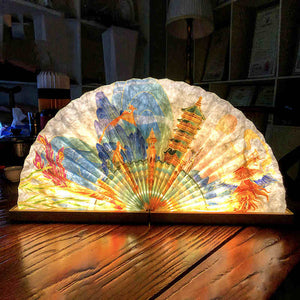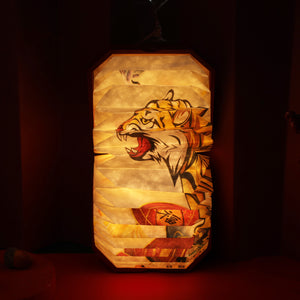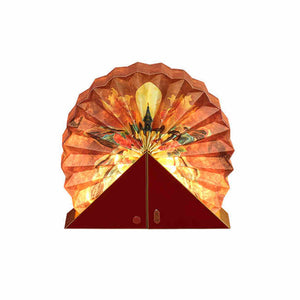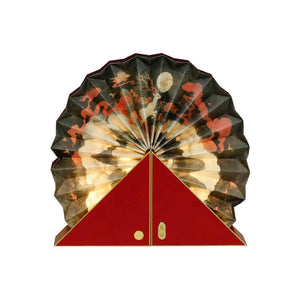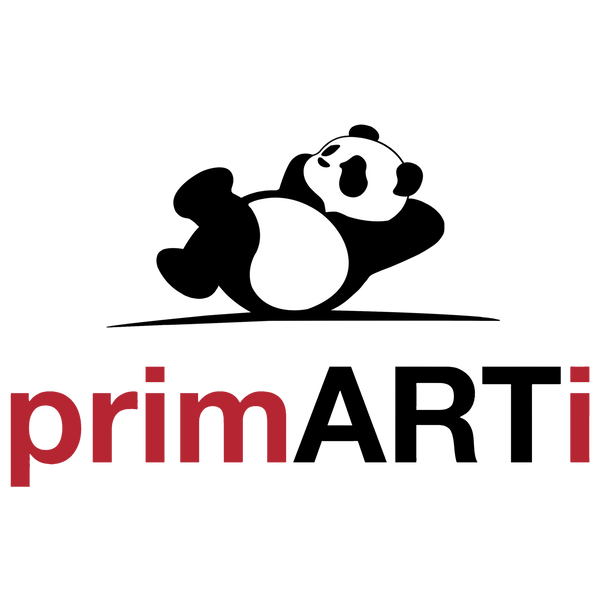
She Cuts Out Paper "Expressions" and Sends "Rat Culture" Across the Country

For over 50 years, Li Feng has been dedicated to paper-cutting, driven mainly by her love for the art. "I just cut every day," she says. Her paper-cutting style is simple and rustic, described as "growing out of the soil." She hopes to share her joy and passion for this traditional culture with more people around her.

In traditional Chinese folklore, there is a saying: "On the twenty-eighth day of the twelfth lunar month, paste paper-cuttings on the windows." These days, Li Feng's scissors have been busy, cutting out various rat patterns to give to friends and relatives.
Li Feng is currently a member of the China Literary and Art Critics Association. Since retiring from Daqing Normal University in 2018, she has not been idle. She also serves as the chairperson of the Daqing Literary and Art Critics Association in Daqing, Heilongjiang Province, and a member of the Heilongjiang Writers Association. In her view, promoting and spreading Chinese traditional culture remains an important responsibility.
In recent years, Li Feng has further developed her childhood hobby of paper-cutting. On the eve of the Spring Festival in the Year of the Rat, she focused on researching "rat culture" and sent rat-themed paper-cuttings to people all over the country.
"From Childhood to Old Age with Paper-Cutting"
Li Feng learned paper-cutting from her grandmother when she was young. "As a child, I watched my grandmother use saved wrapping paper to cut bat patterns and other designs. I was very interested and followed her example. At first, I could only cut out holes, but by the age of six or seven, I could cut out various leaf shapes that my family praised as beautiful," Li Feng told reporters.
By the time she was in elementary school, Li Feng had some initial original works. In middle school, she began to learn to use a carving knife with her female classmates. "By that time, I could carve some beautiful flower patterns," she said.
"In college, I remember a literary magazine that had paper-cutting patterns on the back cover of each issue. I would copy and cut those patterns every month. After I started working, one year I helped decorate the background wall for a company party. I cut out patterns of green ferns, pink plum blossoms, yellow sunflowers, blue morning glories, and dark green Korean pine trees, and I was praised by my leaders." This became one of Li Feng's proudest memories.
For over 50 years, Li Feng has persisted in paper-cutting, driven mainly by her love for it. "After retirement, I had more free time. I learned paper-cutting in a public class at the local library and am now part of a paper-cutting group where the teacher assigns a simple drawing and paper-cutting homework every day. So, I cut every day."
Li Feng's paper-cutting style is simple and rustic, described as "growing out of the soil." She hopes to share her joy and passion for this traditional culture with more people around her. "There are fewer paper-cutting art critics, and I hope to contribute to paper-cutting art through my hobby and aesthetic experience."
Encouraging Her Nephew with "Rat Culture"
The year 2020 was the Year of the Rat, and Li Feng began cutting red paper rats in advance to give to friends and relatives before the Spring Festival. However, the unattractive appearance of rats initially left her unsure where to start. Inspired by her teacher, she searched the internet for information on rats. "This search really surprised me: I realized I knew nothing about 'rat culture' before," Li Feng said.
After some research, Li Feng first cut a paper-cutting titled "Three Historical Rats." "The meaning is that there are three most influential rats in Chinese history. One is the rat in 'The Book of Songs · The Big Rat,' which harshly satirized the exploiters. The second is the rat in Li Si's 'rat philosophy' during the Qin Dynasty. Li Si, as a teenager, observed the different living environments of rats and their resulting mental states, realizing that 'whether a person has potential depends on whether they can find a good platform, just like the two types of rats.' The third is the rat in Zhang Tang's 'rat law' during the Han Dynasty. As a teenager, Zhang Tang solved a theft case involving a rat to prove his innocence and wrote a sharp judgment that showed his potential to his father, who was an official."
Li Feng gave this meaningful paper-cutting to her disabled nephew. "My nephew has been disabled since childhood, but he loves reading, especially historical books. I gave him this paper-cutting to encourage him to continue reading and learning."
Expressing Gratitude to Family with Myths
Li Feng also designed a pattern with two parts. On the left is a cute little rat biting a hole in the border that symbolizes night. On the right, the millet beside the rat grows into seedlings. The left pattern is inspired by the myth "The Rat Bites Open the Sky."
"Legend has it that in ancient times, the world was in chaos, with no distinction between day and night or direction. At midnight, a tiny rat bravely bit a hole in the chaos. In an instant, sunlight shone in, separating the heavens and the earth, and bringing light and warmth. This is the rat's merit in creating the world," Li Feng explained. The right pattern is inspired by another myth. "After the world was formed, people had no millet to eat. The seeds were in the bag of the monk Budai. The rat took advantage of the dark night to steal the seeds. Because it was in a hurry, a few grains fell to the earth, giving people the seeds they needed. Although the rat's motivation was selfish, it objectively benefited humanity."
Li Feng gave this paper-cutting to the uncles, aunts, and maternal uncles in her family. "They are the senior members of the family who have played a pioneering role in establishing the family business and continuing the descendants. I also gave this paper-cutting to my eldest brother. Because my father was a driver who was always away from home, my eldest brother, still in his teens, began to take on the role of the family's mainstay. I am very grateful to him."
Connecting Hearts with Little Rats
Li Feng also gave a "little rat hugging an apple" paper-cutting to a famous female writer. "Twenty years ago, I read her article mourning her husband and was so moved that I felt her sorrow. This year, when I read that article again, I thought about how she must need support at over fifty. I handed her this simplest paper-cutting and said, 'You are the most peaceful (a homophone for 'rat')." She smiled happily."
Li Feng also cut paper-cuttings with themes like "You are the most wealthy (a homophone for 'rat')," "You are the happiest (a homophone for 'rat')," and "You are the most auspicious (a homophone for 'rat')" and gave them to friends and relatives. Although the theme of each paper-cutting was centered on rats, the connotations were different, designed according to the specific circumstances of each person and family.
"Paper originally has no expression, but with thoughts and emotions embedded in the work, it can connect people's hearts," Li Feng believes. She thinks that paper-cutting art needs continuous innovation in tools, themes, and creativity in the future. "With originality, paper-cutting art will have more vitality."
